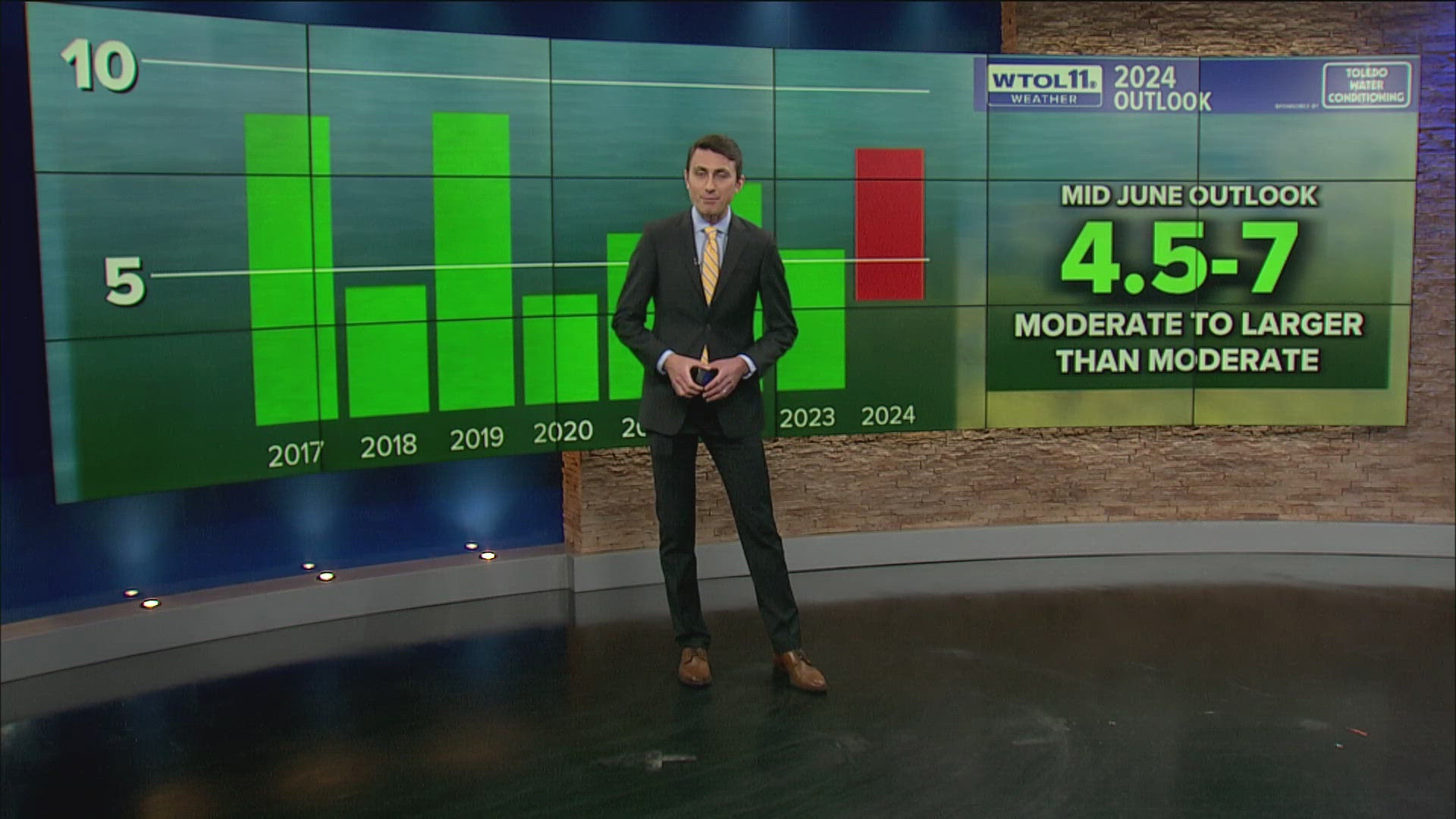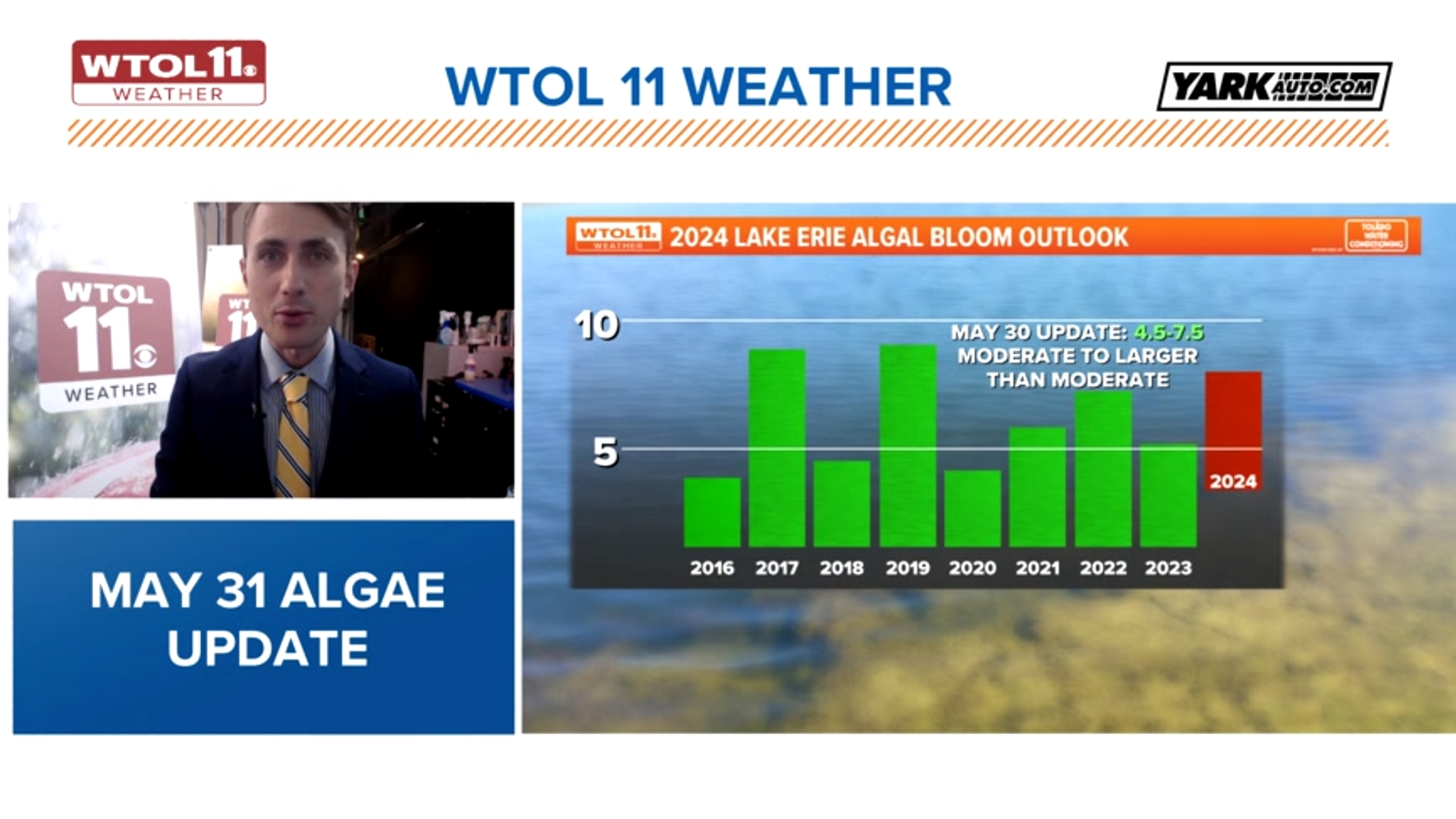TOLEDO, Ohio — Every summer, blue-green algae proliferates on Lake Erie, impacting water quality and outdoor recreation to varying degrees. Weather conditions impact the size and severity of the harmful algal bloom (HAB). In early May, NOAA released its first western Lake Erie algal bloom forecast of the season. Based on weather conditions from the past several weeks, an updated forecast was issued on Thursday, May 23.
In this article, Meteorologist John Burchfield will preview the 2024 harmful algal bloom and provide weekly updates based on the latest data.
What causes HAB?
Algal blooms are fueled by nutrient runoff into the Maumee River and Lake Erie. Nutrients like phosphorus and nitrogen enable blue-green algae to spread rapidly during the summer months. Heavy rain and warm temperatures speed up the development of harmful algal blooms.

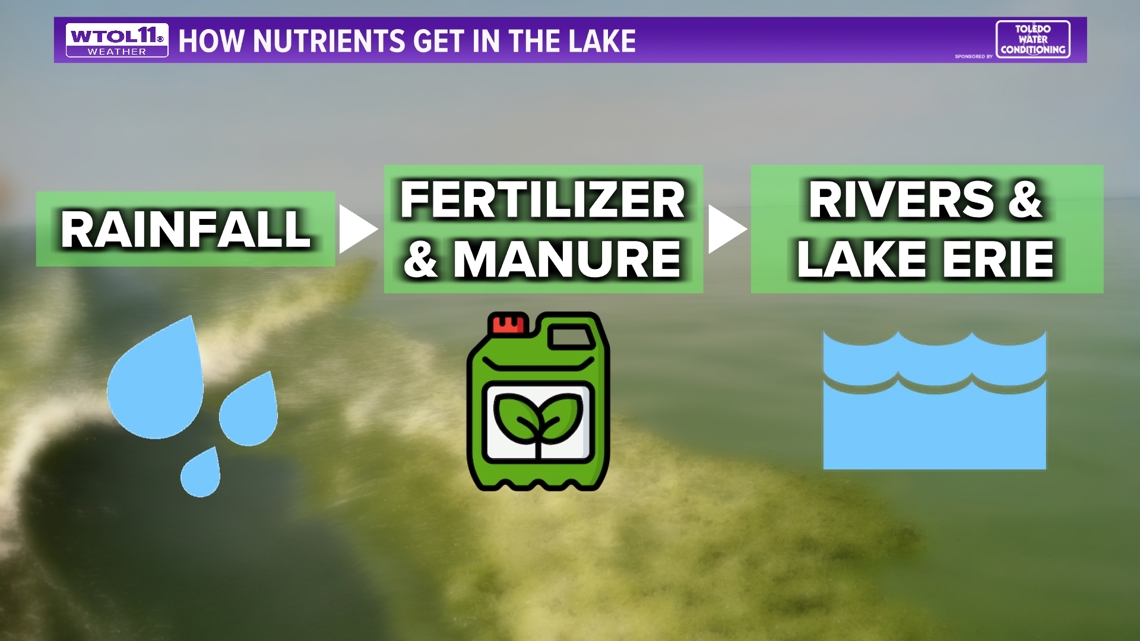
So how have weather conditions this spring impacted the start of this year's algal bloom? Heavy spring rainfall has increased runoff into Lake Erie, filling its waters with elevated levels of nutrients. During the month of April, Maumee River phosphorus levels were the second highest recorded since 2003.
April was the wettest on record in the Toledo area with 7.94 inches of rainfall, marking only the fourth time in history April rainfall exceeded half a foot. This rainfall drained phosphorus and nitrogen from northwest Ohio farm fields into the Maumee River and eventually Lake Erie.

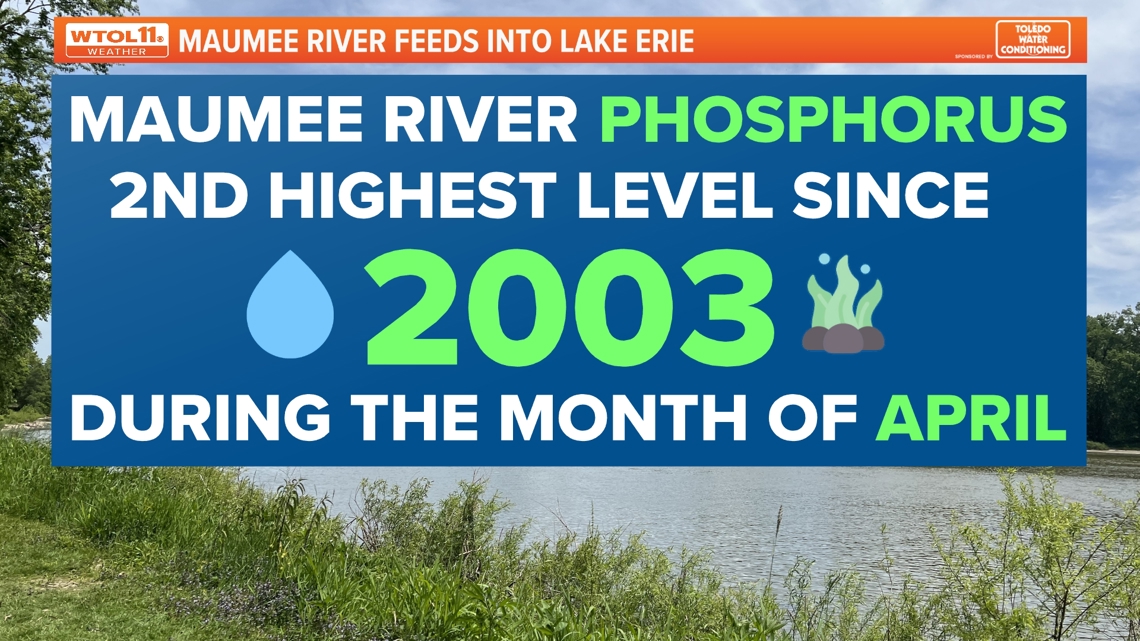
Researchers measure total bioavailable phosphorus (TBP) levels at the Maumee River near Waterville to predict how nutrient runoff will feed blue-green algae growth during the summer. TBP, measured in metric tons, can be compared to past years to predict future algal blooms.
As of May 21, TBP levels were measured at 263, similar to both 2022 and 2023. Given that both of the past two seasons featured moderate to larger than moderate algal blooms, this similarity in phosphorus levels is a useful metric in determining severity.
TBP levels can vary greatly in late May, ranging from less than 100 (2012) to over 700 (2015). High early season TBP levels, such as in 2015, are a concerning sign regarding the development of a potentially severe harmful algal bloom. With moderately high phosphorus levels early this season, experts are predicting an average to slightly larger than average algal bloom.

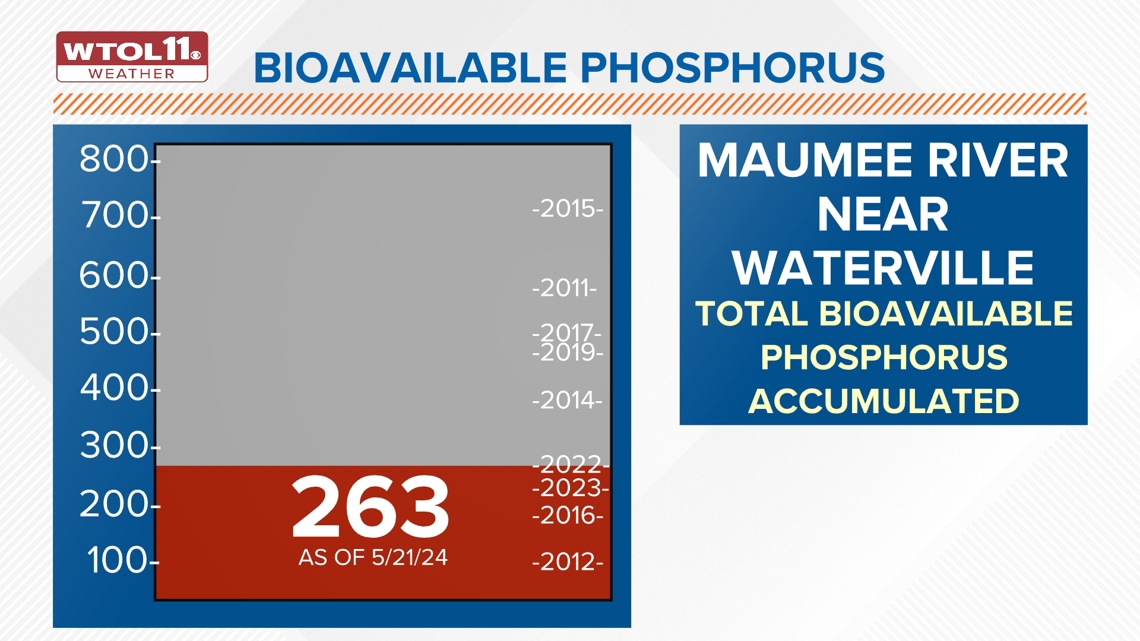
Despite the heavy nutrient loading that occurred during the historically rainy April, precipitation frequency and intensity have declined substantially during the month of May. With just 1.58 inches of rainfall, May precipitation is far below average. Because of this drop in precipitation, TBP levels have only increased marginally since the original NOAA forecast in early May. As a result, the initial forecast remains largely on track.
The bloom, which typically concentrates in Lake Erie's western basin, usually begins to form in mid-to-late July. It dissipates in the autumn, but the timing is dependent on the frequency of wind events in September, according to the NOAA.


The Harmful Algal Bloom Outlook
So what can you expect for this year's harmful algal bloom? A moderate to slightly larger than moderate bloom is expected, with the ultimate outcome depending on June precipitation and temperatures. A wetter and warmer start to summer will lead to a more severe algal bloom, and drier and cooler conditions could hamper the proliferation of blue-green algae.

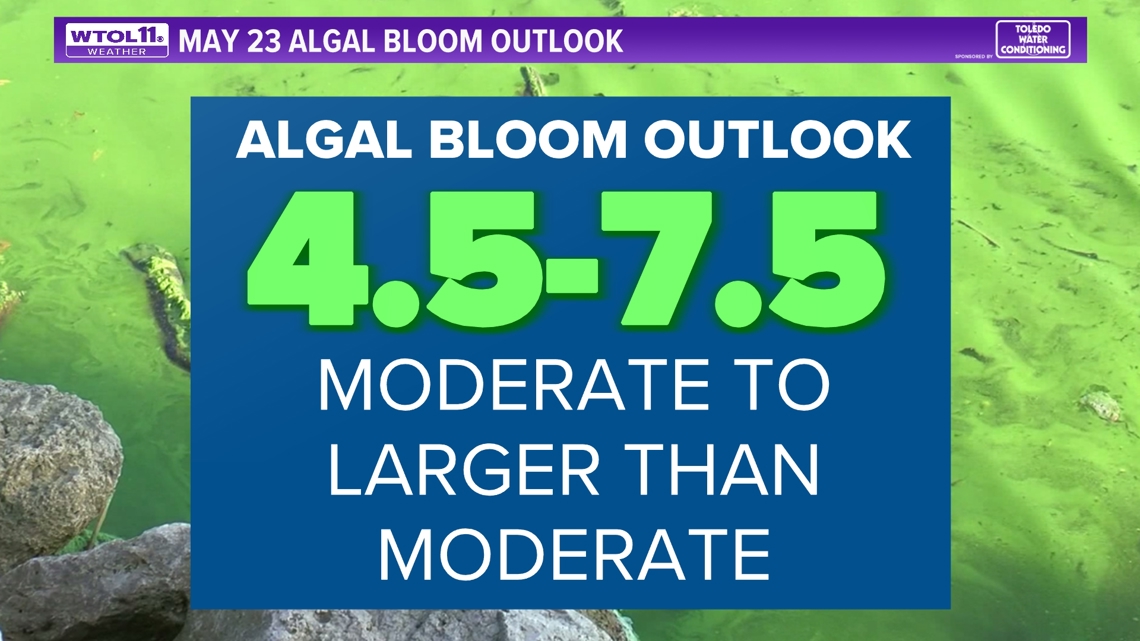
Bloom severity is quantifiably measured on a scale of 1-10, with higher numbers representing more significant impacts to the lake water. Experts anticipate a range of 4.5-7.5 this year similar to the initial prediction in early May. This range expresses a good deal of uncertainty, and the algal bloom will depend heavily on weather conditions in the coming weeks.

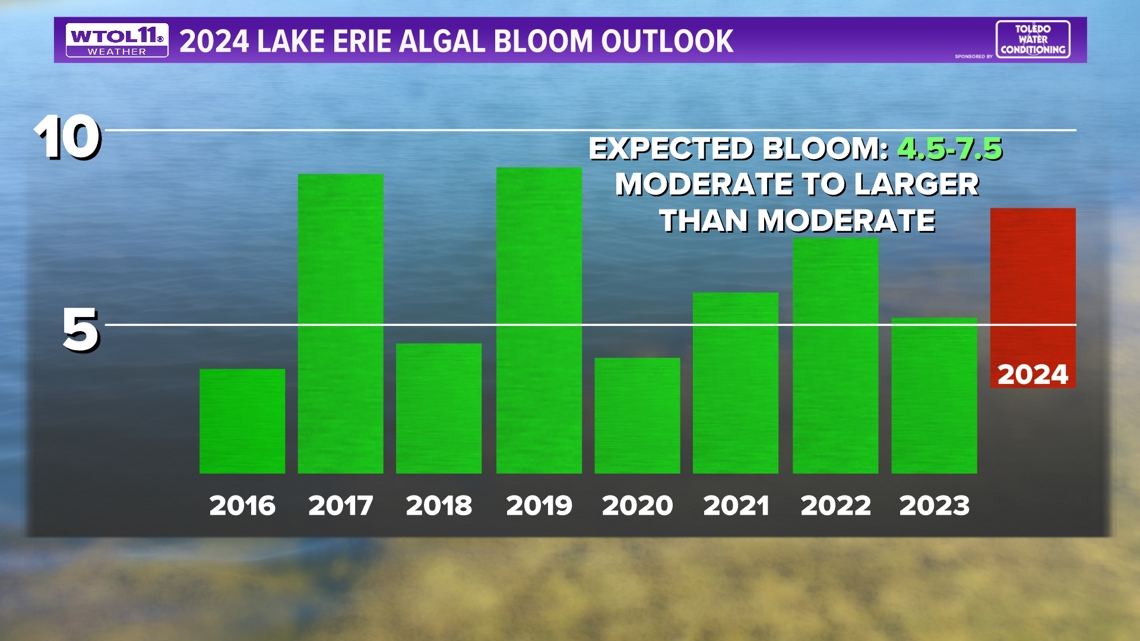
While the harmful algal bloom will likely fall well below the levels experienced a decade ago during the historic water crisis, warm and wet weather could lead to another severe algal bloom that impacts water quality and outdoor recreation.
May 30 HAB update
The NOAA continues to project a severity in the range of 4.5 to 7.5. According to scientists, rainfall amounts in the Maumee watershed were less than expected last week and only increased the total phosphorous load slightly.
The TBP load was 265 as of May 28, the NOAA said, just slightly below the 2022 load and above the 2023 amount.
If rainfall levels are average through June and July, the severity will likely be closer to 5, scientists said in the weekly bulletin. But if higher than average rainfall occurs, the severity may be closer to 7, which is what the lake experienced in 2022.
June 6 HAB update
With the near-normal rainfall observed in May and early June expected to persist, the NOAA has kept its prediction of a severity range between 4.5 and 7. The exact number will be dependent on rainfall received in the coming months.

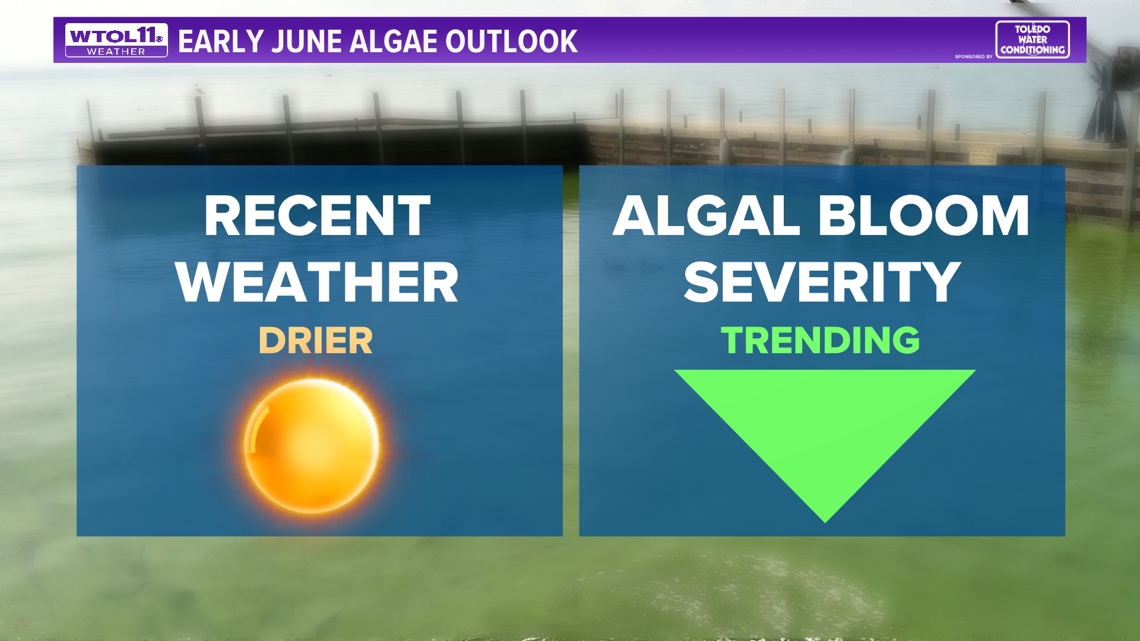
The total bioavailable phosphorous, as of June 4, is 280, according to NOAA's latest forecast bulletin.

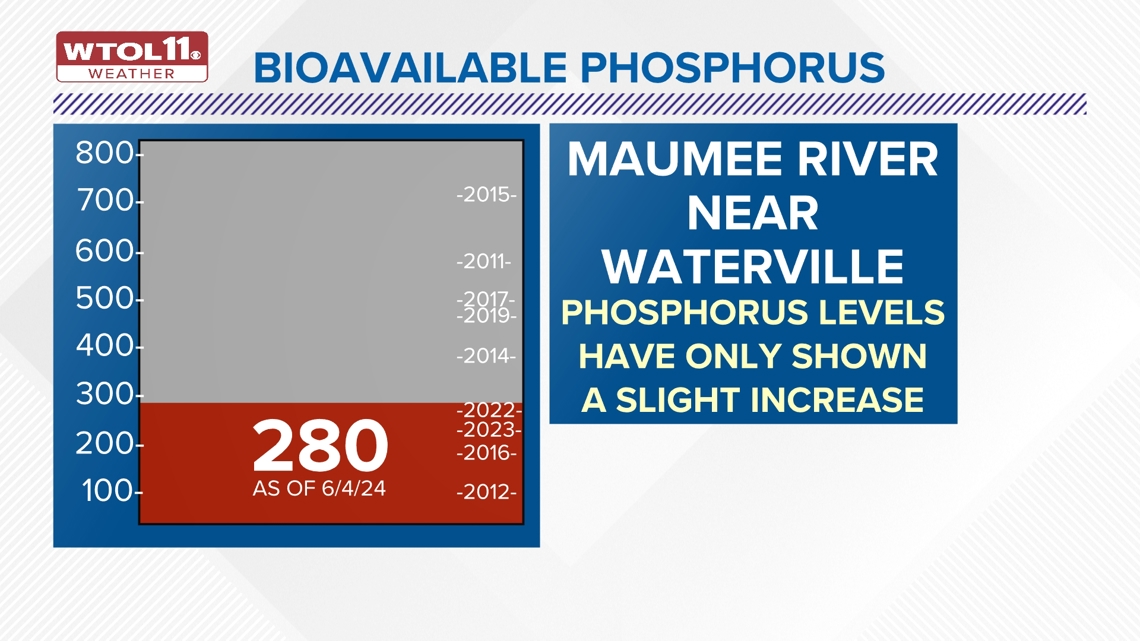
Stay tuned to the WTOL 11 weather team and check this story weekly for updates on the 2024 harmful algal bloom.
How do HAB affect me?
Harmful algal blooms affect northwest Ohio summers. The health risks posed by microcystin can cause cities to close beaches, preventing and limiting boating, fishing and swimming tourism. According to researchers, Lake Erie tourists spend more than $15 billion annually, generating $1.9 billion in state taxes. It also supports over 100,000 tourism-related jobs.
HAB can even affect shoreline property values, analysts said. For every 1 μg/L (micrograms per liter) increase in harmful algae blooms in Lake Erie, homeowners near the lake can expect their property values to decrease by 1.7 percent, or $2,205.
HAB also produce microcystin, a known toxin that can affect humans and wildlife, according to the NOAA.
Protecting our Water
A decade ago, WTOL 11 pledged to seek answers and hold officials accountable in our ongoing fight to Protect our Water. Now, as we mark 10 years since the Toledo Water Crisis, we continue that promise we made to our community. Join us as we explore the changes that have been made, find out which promises have been fulfilled, and determine if we are truly better off now than we were in the summer of 2014.
WATCH MORE

